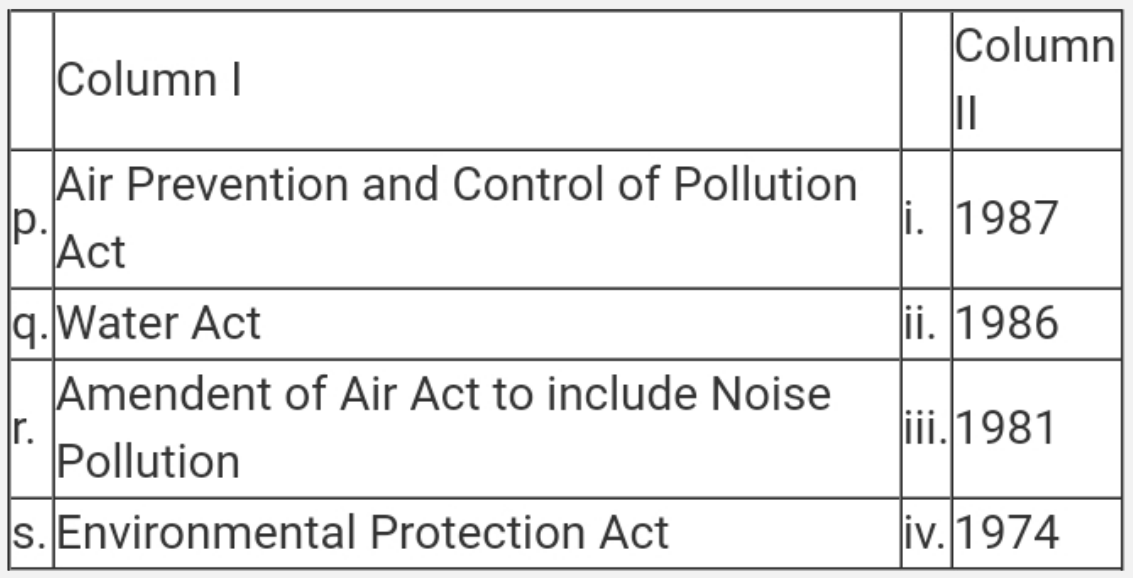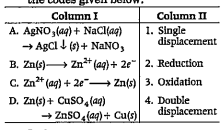Match the column-I with column-II and select the correct answer:
Column-IColumn-IIA.Pachytenei.Chromosome condensationB.Zygoteneii.Chiasma visibleC.Diploteneiii.TerminalizationD.Leptoteneiv.Gene exchangeE.Diakinesisv.Synapsis
A-i, B-ii, C-iii, D-iv, E-v
A-iv, B-v, C-ii, D-i, E-iii
A-iii, B-iv, C-v, D-ii, E-i
A-ii, B-iii, C-iv, D-i, E-v
The correct Answer is:B
To solve the matching question between Column-I and Column-II, we need to identify the correct relationships based on the stages of meiosis and their characteristics. Let's go through each item step by step.
1. Pachytene:
- Definition: This is the third stage of prophase I in meiosis.
- Key Feature: During this stage, crossing over occurs between non-sister chromatids, leading to genetic exchange.
- Match: This corresponds to iv. Gene exchange.
2. Zygotene:
- Definition: This is the second stage of prophase I in meiosis.
- Key Feature: Homologous chromosomes begin to pair up, a process known as synapsis.
- Match: This corresponds to v. Synapsis.
3. Diplotene:
- Definition: This is the fourth stage of prophase I in meiosis.
- Key Feature: Chiasmata (the points where crossing over has occurred) become visible during this stage.
- Match: This corresponds to ii. Chiasma visible.
4. Leptotene:
- Definition: This is the first stage of prophase I in meiosis.
- Key Feature: Chromosomes start to condense and become visible.
- Match: This corresponds to i. Chromosome condensation.
5. Diakinesis:
- Definition: This is the final stage of prophase I in meiosis.
- Key Feature: The synaptonemal complex disassembles, and the chromosomes are fully condensed and ready for metaphase.
- Match: This corresponds to iii. Terminalization.
Final Matches:
- A. Pachytene → iv. Gene exchange
- B. Zygotene → v. Synapsis
- C. Diplotene → ii. Chiasma visible
- D. Leptotene → i. Chromosome condensation
- E. Diakinesis → iii. Terminalization
Correct Answer:
The correct answer is the second option where:
- A matches with iv
- B matches with v
- C matches with ii
- D matches with i
- E matches with iii
- Definition: This is the third stage of prophase I in meiosis.
- Key Feature: During this stage, crossing over occurs between non-sister chromatids, leading to genetic exchange.
- Match: This corresponds to iv. Gene exchange.
- Definition: This is the second stage of prophase I in meiosis.
- Key Feature: Homologous chromosomes begin to pair up, a process known as synapsis.
- Match: This corresponds to v. Synapsis.
- Definition: This is the fourth stage of prophase I in meiosis.
- Key Feature: Chiasmata (the points where crossing over has occurred) become visible during this stage.
- Match: This corresponds to ii. Chiasma visible.
- Definition: This is the first stage of prophase I in meiosis.
- Key Feature: Chromosomes start to condense and become visible.
- Match: This corresponds to i. Chromosome condensation.
- Definition: This is the final stage of prophase I in meiosis.
- Key Feature: The synaptonemal complex disassembles, and the chromosomes are fully condensed and ready for metaphase.
- Match: This corresponds to iii. Terminalization.
- A. Pachytene → iv. Gene exchange
- B. Zygotene → v. Synapsis
- C. Diplotene → ii. Chiasma visible
- D. Leptotene → i. Chromosome condensation
- E. Diakinesis → iii. Terminalization
The correct answer is the second option where:
- A matches with iv
- B matches with v
- C matches with ii
- D matches with i
- E matches with iii
Topper's Solved these Questions
- CELL CYCLE AND CELL DIVISIONBOOK - PHYSICS WALLAHCHAPTER - CELL CYCLE AND CELL DIVISIONEXERCISE - NEET PAST 10 YEARS QUESTIONS
33 Videos
- CELL CYCLE AND CELL DIVISIONBOOK - PHYSICS WALLAHCHAPTER - CELL CYCLE AND CELL DIVISIONEXERCISE - NEET PAST 10 YEARS QUESTIONS
33 Videos
- CELL : THE UNIT OF LIFEBOOK - PHYSICS WALLAHCHAPTER - CELL : THE UNIT OF LIFEEXERCISE - NEET Past 10 Years Questions
64 Videos
- CHEMICAL COORDINATION AND INTEGRATION BOOK - PHYSICS WALLAHCHAPTER - CHEMICAL COORDINATION AND INTEGRATION EXERCISE - NEET PAST 10 YEARS QUESTIONS
29 Videos
Similar Questions
Knowledge Check
Match column-I with column-II and select the correct answer :-
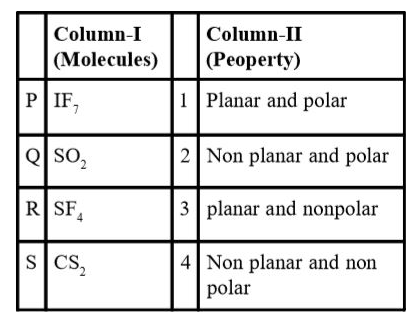 A(P)→(4),(Q)→(1),(R)→(2),(S)→(3)B(P)→(4),(Q)→(2),(R)→(1),(S)→(3)C(P)→(3),(Q)→(1),(R)→(2),(S)→(4)D(P)→(3),(Q)→(1),(R)→(4),(S)→(2)
A(P)→(4),(Q)→(1),(R)→(2),(S)→(3)B(P)→(4),(Q)→(2),(R)→(1),(S)→(3)C(P)→(3),(Q)→(1),(R)→(2),(S)→(4)D(P)→(3),(Q)→(1),(R)→(4),(S)→(2)Match Column-I with Column-II and select the correct answer.
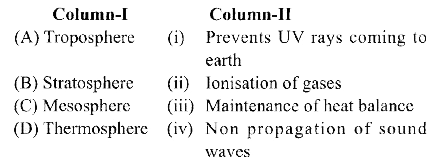 AA-(ii),B-(iv),C-(iii),D-(i)BA-(iv),B-(ii),C-(i),D-(iii)CA-(iii),B-(i),C-(iv),D-(ii)DA-(i),B-(iii),C-(ii),D-(iv)
AA-(ii),B-(iv),C-(iii),D-(i)BA-(iv),B-(ii),C-(i),D-(iii)CA-(iii),B-(i),C-(iv),D-(ii)DA-(i),B-(iii),C-(ii),D-(iv)Match Column-I with Column-II and select the correct answer.
 AA-(i) , B-(ii) , C-(iii) , D-(iv)BA-(iv),B-(ii),C-(iii) , D-(i)CA-(iv),B-(i),C-(v),D-(ii)DA-(iv),B-(i),C-(ii),D-(v)
AA-(i) , B-(ii) , C-(iii) , D-(iv)BA-(iv),B-(ii),C-(iii) , D-(i)CA-(iv),B-(i),C-(v),D-(ii)DA-(iv),B-(i),C-(ii),D-(v)
Match column I with column II and select the correct answer.

View SolutionMatch Column-I with Column-II and select the correct answer :

View SolutionMatch the Column -I and Column-II and select the correct answer :-
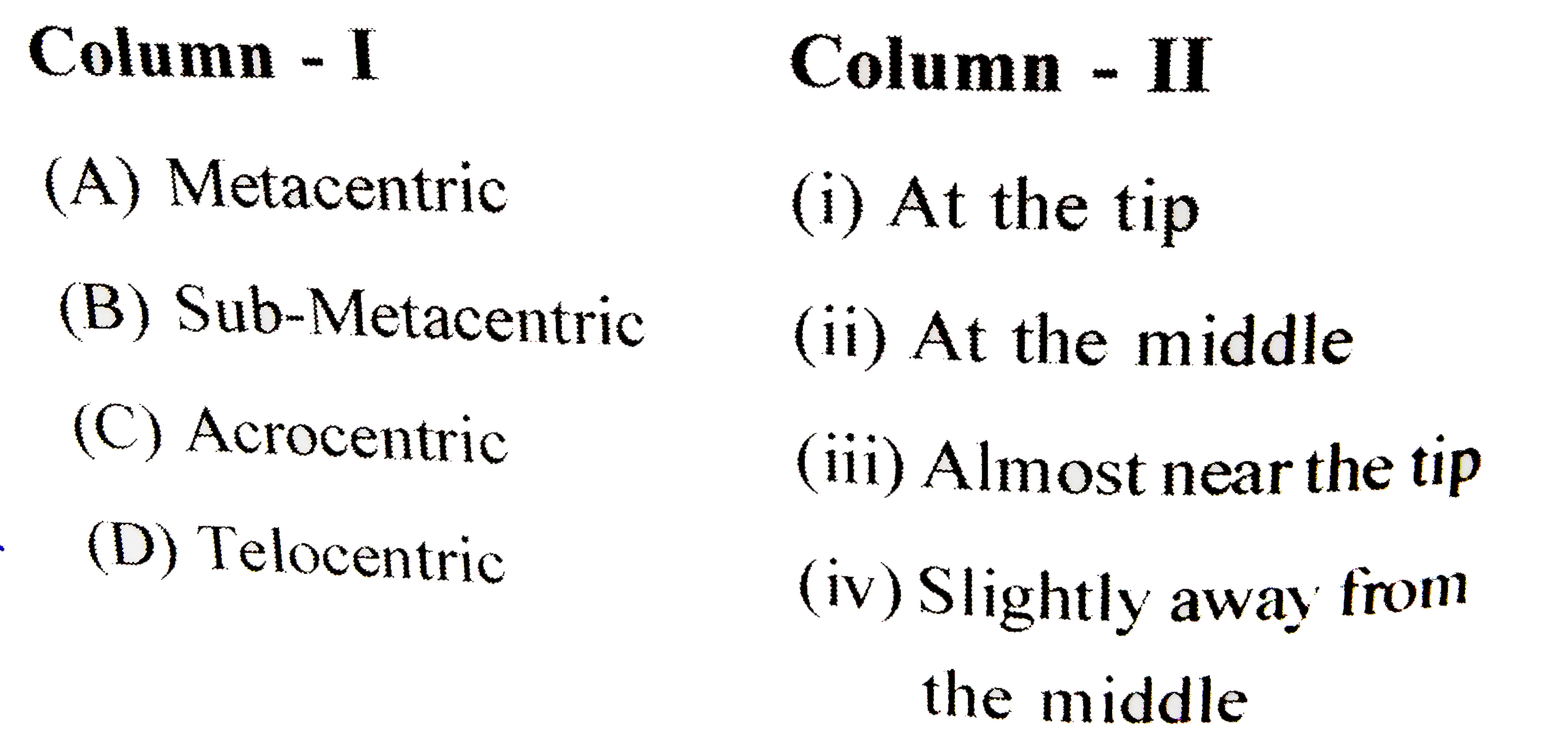
View SolutionMatch the column-I with column-II and select the correct answer.
Column−IColumn−II(A)Pachytene(i)Synizesis(B)Zygotene(ii)Chiasma visible(C)Diplotene(iii)Terminalisation(D)Leptotene(iv)Gene exchange(E)Diakinesis(v)Synapsis
View SolutionMatch column-I and column-II and select the answer :

View Solution

